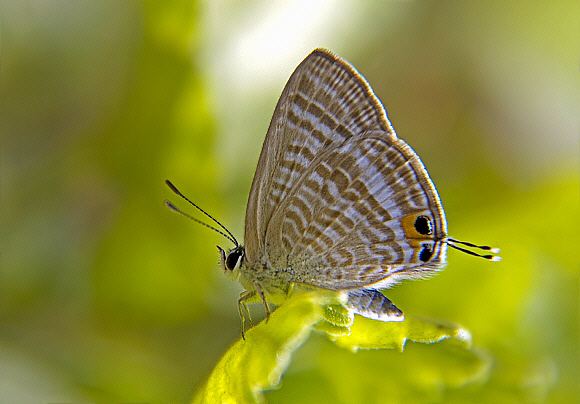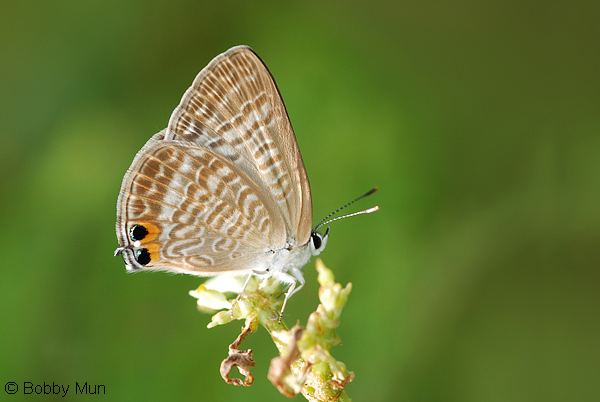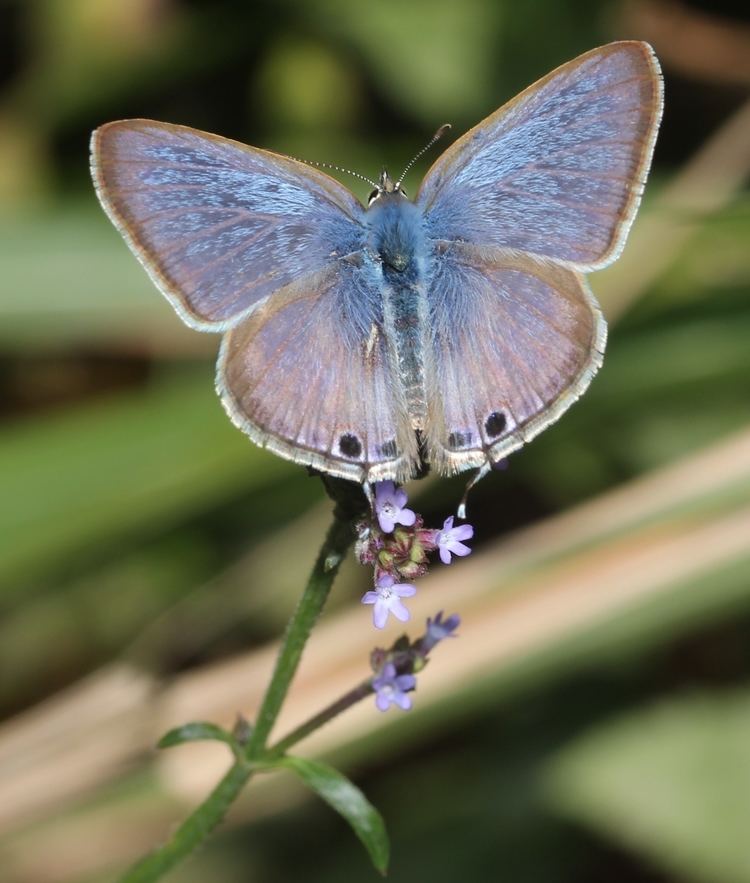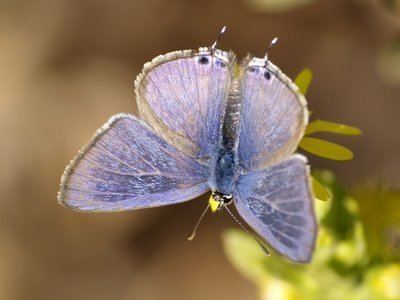Higher classification Lampides | Scientific name Lampides boeticus Rank Species | |
 | ||
Similar Lampides, Butterfly, Lycaenidae, Short‑tailed blue, Holly blue | ||
Long tailed blue butterfly lampides boeticus
Lampides boeticus, the peablue, pea blue, or long-tailed blue, is a small butterfly that belongs to the lycaenids or gossamer-winged family.
Contents
- Long tailed blue butterfly lampides boeticus
- Peablue tijgerblauwtje lampides boeticus
- Etymology
- Distribution
- Habitat
- Description
- Ecology
- References
Peablue tijgerblauwtje lampides boeticus
Etymology

The Latin species name boeticus refers to Baetica, a province of the Roman Empire in the Iberian Peninsula .
Distribution
This species can be found in Europe, Africa, South and Southeast Asia, and Australia
Habitat

This species inhabits the edge of forests, mountain meadows and hot flowery places at an elevation up to 2,700 metres (8,900 ft) above sea level.
Description

The wingspan is 24–32 mm for males and 24–34 mm for females. In these small butterflies the males have a mainly blue violet upperface of the wings with the brown edges, while the females have only a small amount of blue colour in the centre of the wings (sexual dimorphism). Both sexes have a thin, long tail in the hindwings and two black spots in the anal angle.The underface of the wings is ocher and adorned with white markings and with a larger white submarginal streak. The underface of each hindwing shows a pair of small black eye-spots beside each tail, with an orange marginal spots at the anal angle.
This species is rather similar and it can be confused with [[Leptotes pirithous and Cacyreus marshalli.
Ecology
This species may have three generations a year. Adults fly from February to early November and are strong migrants. Eggs are white with a greenish tinge and have a disc-shaped form. They can reach a diameter of 0.5 mm. They are laid singly on the flower buds of the host plants.
Old caterpillars are green or reddish-brown, with dark dorsal stripe. They reach a length of 14-15 mm. Pupae reach a length of 9-10 mm. They are light grayish-brown with medium-sized dark spots and dark dorsal stripe.
The larvae feed on flowers, seeds and pods of many Fabaceae species, including Medicago, Crotalaria, Polygala, Sutherlandia, Dolichos, Cytisus, Spartium and Lathyrus species. It has also been recorded on Crotolaria pallida.
In Australia, the larvae are occasionally attended by ants in the genera Froggattella, Iridomyrmex or Camponotus.
